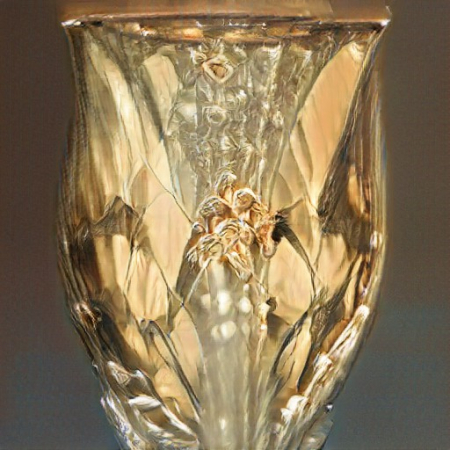Rideis Laying-In Ceremonies
The Rideis, being monotremes, lay eggs, and the traditions about their laying and hatching are rich.
When a woman produces an egg, she places it in a protective cradle stand. For a peasant girl, this might be a cup of mud and straw, while for a noble this might be a painted or enameled porcelain stand or carved and gilded wood. Such pieces could be heirlooms, passed down through families and used to reinforce the family claim to the egg. Regardless of material, the piece is generally half a cubit or a full cubit in height, wider at the base, then narrowing, then widening again to accommodate the egg itself and insulating materials. The height and sweep of form will be determined by wealth and artisanry.
The egg-father will receive guests to celebrate the laying-in of the egg into the cradle stand, generally within two days of the egg's laying. In an affluent house, the rooms will be decorated with little piles of polished stones, reminiscent of nests or protective stoneworks, and yellow hake flowers are traditional.
Drinks and treats will be served as guests socialize, and in turn each guest will make one obligatory visit to the egg-mother and her egg in the laying room (or, in a smaller house, a sleeping room or even a protected corner). Each guest will bring either a polished stone or a flower (provided by the host) to the laying room, placing the flower beside the egg or the stone at the base of the stand, until stones fill in the stand's curve. The mother keeps one hand on the egg throughout, a gesture of protection, and does not leave the laying room.
“May happiness fall upon you and your new family. I wish for a safe brooding and a healthy hatchling.”After the laying-in, the egg is protected whenever the mother is away. Fathers do not often help to warm or turn the egg. Families without means use mud and thatch to insulate the egg in the cradle stand, others will use wool, and some will cover their eggs in the finest hair and silk. When the egg hatches, congratulations are sent to the family, but friends and social connections do not visit again immediately, leaving the parents and new child to settle and rest before facing social obligations. Well-wishers may pay visits after two to three weeks, upon no particular schedule.
Hake flowers bloom in the spring and summer, but some are kept in hothouses and are available for layings-in in other seasons. Obviously this is at a cost not accessible to all expectant parents, and so among the poorer classes other yellow objects may be presented instead.
It was inconceivable that Kayvin was expected to carry on as if nothing had happened. But Lord Frenan’s second wife had borne him an egg, and there were social protocols to be kept.
Kayvin held his arms out for the servants to finish dressing him. It was not a fully formal affair, but the prince should be well-dressed for an official visit to an egg laying-in. He would also need his Sera Qadra.






Comments